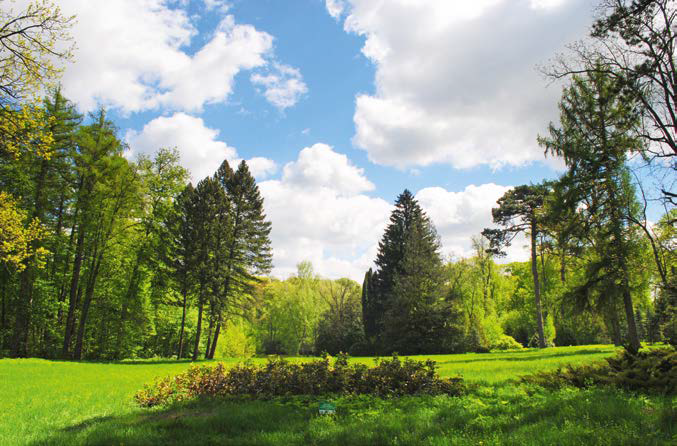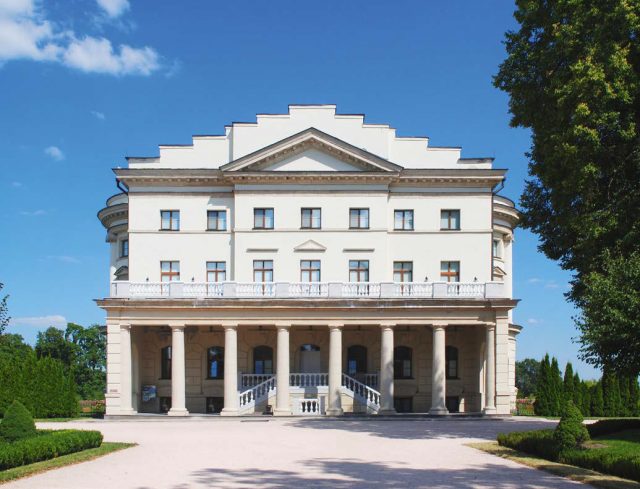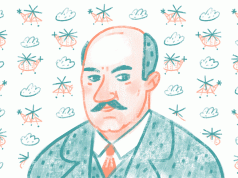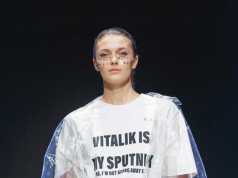For me tourism has always been a wonderful tool for broadening my horizon and filling in my mental world map. It is always a great feeling to travel abroad to have a chance to explore new places and cities with different cultures and sights. Yet, while engaged in the pursuit of novelty we often ignore our own treasures and beauties, hidden in various different nooks of our big country. When I took a recent trip to Chernihiv, where I had never been before, I discovered the charms of the region. At the time, I was particularly fond of Western Ukraine, and even assumed that all the best palaces, architecture and natural landscapes were located there. It turns out that you do not need to go all the way to Lviv to see amazing historical sites. If you do decide to go to Chernihiv, be sure to do so in Spring time when the tulips blossom and the region is especially beautiful.
Chernihiv is the northernmost regional center of Ukraine, standing on the Desna River, northeast of Kyiv and was one of the largest settlements of Kievan Rus. The Lonely Planet guide describes Chernihiv as “seldom- visited corner of rural Ukraine” and “one of the highlights of Polissya”. Visiting Chernihiv will take you on a fascinating journey through time. The city has more architectural and historical monuments than almost anywhere else in Ukraine. 30% of all the pre-Mongol artifacts in Ukraine are located here and the city is a candidate for inclusion in the UNESCO World Heritage list.
Places to visit:

Transfiguration Cathedral
One of the oldest churches in Ukraine, built in 1034, two years before St.Sophia’s Cathedral in Kyiv, a unique example of Old Russian architecture. Preobrazhenskaya Street, 1 (Chernihiv Dytynets Park).

Dytynets Park
This is the oldest part of Chernihiv, a hill on the high bank of the Desna River, where the prince’s dytynets (fortress) was located. Here you can see one of the symbols of the city — the 12 cast-iron 17th century bastion cannons, and also enjoy a nice panorama of the city across the Desna river.
Trinity Cathedral
The Trinity Cathedral was built at the expense of the Ukrainian Hetman Ivan Mazepa in 1679-1695. It is a wonderful example of Ukrainian baroque architecture. The 85 meter high bell tower is open for visitors to enjoy the city from a bird’s eye view.
St. Paraskeva Church (or Pyatnitskaya church)
Named after the Christian Great Martyr Paraskeva, this church is a classic of ancient Russian architecture built at the turn of the 12th-13th centuries. During the Second World War, the church was destroyed. It was completely restored in the original Old Russian style in 1962.
St. Anthony Caves.
One of the most mysterious places to visit in the city. The St. Anthony caves, founded in 1069 by the monk Anthony Pechersky, is a part of the Troitsko-Ilyinsky monastery located in the Boldiny Mountains. Through the Ilyinsky church you can get to the cave (315 meters) which includes three underground churches. Guided tours are available.
Kachanovka Palace
Kachanovka is a national reserve of historical and cultural significance, a picturesque park-residence. Founded in the 18th century, it survived several changes in ownership (from the Tarnowski family to the sugar king Kharitonenko), several renovations, the revolution. It is still well preserved today. St. Paraskeva Church (or Pyatnitskaya church) Taras Shevchenko, Ilya Repin, Panteylemone Kulish, Nikolay Gogol, Mikhail Glinka, Marko Vovchok and many other renowned personages have visited Kachanovka over the years.
The estate is situated on a picturesque hillside near the Smosh river. The front yard consists of a palace, a water tower and two outbuildings. The contrast of the palace’s opulence with its remote surroundings is truly striking — the palace grounds include 560 hectares of parkland.
The “Trostyanets” Landscape Park
Trostyanets is a monument to the landscape architecture of the 19th century, created on the initiative of Ivan Mikhailovich Skoropadsky, who was the heir to the famous hetman Skoropadsky. Ivan Mikhailovich was very fond of his park and wanted it to be one of the greatest examples of park architecture of the time. You will see plants collected from every corner of the world here: ginkgo biloba, tulip trees, many coniferous species and exotic plants. Set aside at least 3-4 hours to visit the park, so that you might take a guided tour and still have time for a leisurely stroll afterward. Feed the swans, take photos, sit on a bench to fully enjoy the beauty and splendor of the fantastic nature.
Baturin, the “Hetman’s Capital”
The National Historic and Cultural Reserve “Hetman’s Capital” is a must-visit for all lovers of history and architecture. Baturin is obviously the most spectacular landmark of the Cossack epoch, because for a long time the city was the residence of the hetmans of Left Bank Ukraine, in particular Ivan Mazepa, Pylyp Orlyk and Kirill Razumovsky. The central object of the “Hetman’s Capital” reserve is the palace of Ukraine’s last hetman, Kirill Razumovsky, built in 1799-1803 by the architect Charles Cameron. For a long time the palace was neglected, but restoration work was concluded in 2008, when it acquired its present elegant appearance. The palace has 55 rooms, but only some of them are open to visitors.
The “Hetman’s Capital” also includes the Baturin Fortress Citadel (likewise renovated in 2008) with terrific view of the river Sejm, the Resurrection Church, Museum of Archeology of Baturin, the house of the general judge Vasily Kochubei, and the Nikolo- Krupitsky monastery.
Film Festival “86”
Festival “86” is an atmospheric film and urban science event which will be held this year from 9-13 May. It takes place in Slavutych, a young city designed to house scientists and workers evacuated from Chernobyl. It is an hour’s drive from Chernihiv, in the Kyiv region. The curators of the festival have declared their aim of changing Ukrainian cities through culture, and the consciousness of the citizens through cinema and art. The festival’s interests include the “cultural economy”, cinema, urban initiatives and education. A truly charming film festival to which Ukraine’s youth and hipsters flock. Great parties at night also.
Natalia Vlasenko is an Odessa based travel writer.




































